Music
Trailers
DailyVideos
India
Pakistan
Afghanistan
Bangladesh
Srilanka
Nepal
Thailand
Iraq
Iran
Russia
Brazil
StockMarket
Business
CryptoCurrency
Technology
Startup
Trending Videos
Coupons
Football
Search
Download App in Playstore
Download App
Best Collections
Technology
Eight months after bringing in a $40 million Series D, Moogsoft‘s co-founder and chief executive officer Phil Tee confirmed to TechCrunch that the IT incident management startup had shed 18 percent of its workforce, or just over 30 employees.
The layoffs took place at the end of October; shortly after, Moogsoft announced two executive hires. Among the additions was Amer Deeba, who recently resigned from Qualys after the U.S. Securities and Exchange Commission chargedhim with insider trading.
Founded in 2012, San Francisco-based Moogsoft provides artificial intelligence for IT operations (AIOps) to help teams work more efficiently and avoid outages. The startup has raised $90 million in equity funding to date, garnering a $220 million valuation with its latest round, according to PitchBook. Itbacked by Goldman Sachs, Wing Venture Capital, Redpoint Ventures, Dellcorporate venture capital arm, Singtel Innov8, Northgate Capital and others. Wing VC founder and long-time Accel managing partner Peter Wagner and Redpoint partner John Walecka are among the investors currently sitting on Moogsoftboard of directors.
Tee, the founder of two public companies (Micromuse and Riversoft) admitted the layoffs affected several teams across the company. The cuts, however, arenota sign of a struggling business, he said, but rather a right of passage for a startup seeking venture scale.
&We are a classic VC-backed startup that has sort of grown up,& Tee told TechCrunch earlier today. &In pretty much every successful company, there is a point in time where therean adjustment in strategy … Unfortunately, when you do that, it becomes a question of do we have the right people&
Moogsoft doubled revenue last year and added 50 Fortune 200 companies as customers, according to a statement announcing its latest capital infusion. Tee said he&extremely chipper& about the road ahead and the companyrecent C-suite hires.

Moogsoftnewest hires, CFO Raman Kapur (left) andCOO Amer Deeba (right).
Moogsoft announced its latest executive hires on November 2, only one week after completing the round of layoffs, a common strategy for companies looking to cast a shadow on less-than-stellar news, like major staff cuts. Those hires include former Splunk vice president of finance Raman Kapur as Moogsoftfirst-ever chief financial officer and Amer Deeba, a long-time Qualys executive, as its chief operating officer.
Deeba spent the last 17 years at Qualys, a publicly traded provider of cloud-based security and compliance solutions. In August, he resigned amid allegations of insider trading. The SECannounced its charges against Deeba on August 30, claiming he had notified his two brothers of Qualys& missed revenue targets before thecompany publicly announced its financial results in the spring of 2015.
&Deeba informed his two brothers about the miss and contacted his brothers& brokerage firm to coordinate the sale of all of his brothers& Qualys stock,& the SEC wrote in a statement. &When Qualys publicly announced its financial results, it reported that it had missed its previously-announced first-quarter revenue guidance and that it was revising its full-year 2015 revenue guidance downward. On the same day, Deeba sent a message to one of his brothers saying, ‘We announced the bad news today.& The next day, Qualysstock price dropped 25%. Although Deeba made no profits from his conduct, Deebabrothers collectively avoided losses of $581,170 by selling their Qualys stock.&
Under the terms of Deebasettlement, he is ineligibleto serve as an officer or director of any SEC-reporting company for two years and has been ordered to pay a $581,170 penalty.
Tee, for his part, said there was never any admission of guilt from Deeba and that healready had a positive impact on Moogsoft.
&[Deeba] is a tremendously impressive individual and he has the full confidence of myself and the board,& Tee said.
- Details
- Category: Technology
Read more: Growing pains at venture-backed Moogsoft lead to layoffs
Write comment (100 Comments)Virtual reality hasn&t proven itself to be the lucrative escape of the every-man, but the medium has done a fairly good job enticing the gaming community and keeping that niche (mostly) happy. While a couple of big titles have gotten some halfway-decent ports to VR, for the most part VR users are confined to whatever indies can build or whatever Oculus can fund.
BigBox VR has been trying to capture attention in the space by not building solo adventures that lead users to find themselves, but instead by trying to match VRphysicality and immersion with social gameplay that leads users to gain greater appreciation for the mediumscale.
The company just closed a $5 million funding round led by Shasta Ventures with participation from GSR Ventures and Pioneer Square Labs Ventures. As part of the round, Shasta partner Jacob Mullins will be getting a seat on the board.
Venture cash for VR content hasn&t exactly been free-flowing in 2018, more so for startups that aren&t caught up in building out a &platform play.& Co-founders Chia Chin Lee and Gabe Brown are more interested in just building out titles and hopefully creating one so successful that they don&t have to stop evolving it. The team at BigBox VR got its start with a cartoonish shooter title called Smashbox Arena; the small team has been really interested in finding what VR enables when it comes to competitive online play.
The BigBox VR team
Funding rounds aren&t often about the achievements of the past; however, the company is currently going full-steam ahead with its next ambitious title, a battle royale title called &POPULATION: ONE.&
I had a chance to suit up in VR and dive-in with Jacob and the founding team. I got my ass kicked a couple times, but then they let me win at some point, which I admit I was pretty okay with.
To say the game shares some similarities with Fortnite is an understatement. Not only is it a battle royale title with a shrinking environment, but certain mechanics like gliding in at the beginning to scrounge for weapons and even Fortnitebuilding feature are central to the gameplay. That being said, battle royale titles have exploded in the wake of PUBG and they seem to all share a lot among each other. For BigBox, VR is the distinguishing feature, with motion controls and the general feeling that everything is life-sized and in your control.
To be honest, a lot of it really does work. Every surface in the game is climbable (by physically grabbing surfaces with the controllers and then doing the arm-work to scale) but more central movements like turning and moving are left to buttons, a technique that ultimately isn&t for the faint of stomach but is a lot more fluid than teleporting around. There are certainly mechanics which could have felt smoother, but this is a private beta game with a lot of room to finesse.
One of the really powerful things about the game was what happened after I was repeatedly sniped and killed off early on in the first couple rounds. The spectator mode is great and itinteresting how much the precise controls of VR lend to allowing you to get more actively enveloped in matches that you aren&t even competing in. There are companies in the VR space working exclusively on this, but for a gaming audience obsessed with streamers, adapting traditional games with a VR spectating workflow or doing so natively seems like a huge opportunity.
Battle royale games remain white-hot, and VR game studios have been trying to find the right way to get a slice of the pie. Perhaps the key is knowing where to innovate while also realizing that the multi-platform grandiose of Fortnite has yet to find its way to VR, so maybe finding a title that scratches that itch is the best place to start.
- Details
- Category: Technology
Read more: Can the startup building a Fortnite for VR become the Fortnite of VR
Write comment (96 Comments)Libertarian on lockdown Privacy minded or paranoid
Security is more front of mind today than ever before. If itnot a company vacuuming up your data or nation states trying to hack your email, ityour own &opsec& that needs a refresh.
For this holiday season, we have more than a dozen gift ideas — from practical gadgets that will make it harder for spies to listen in, to data-saving tips that will keep your information safe — without breaking the bank.

Passphrase dice
Coming up with passwords that are easy to remember is difficult. The better way is to use a longer and more memorable passphrase instead. Itas easy as rolling a handful of dice and using word lists! You can pick up a five-pack of dice to generate random passphrases for just a few bucks. Or, if you want mail-order dice-generated passphrases, you can always rely on teenage security prodigy Mira Modi to generate them for you for a small fee.
Price: $8.00 — $15.00Available from: EFF | Diceware

A password manager subscription
Where are you going to store all those passphrases A password manager, of course! Although most password managers are free, many come with premium features that let you securely synchronize your passwords across your many devices. Our favorite password manager is 1Password — which offers gift certificates. But, everyone will have their preference, and there are plenty of password managers out there to choose from.
Price: from $4.99/monthAvailable from: 1Password | LastPass | Dashlane
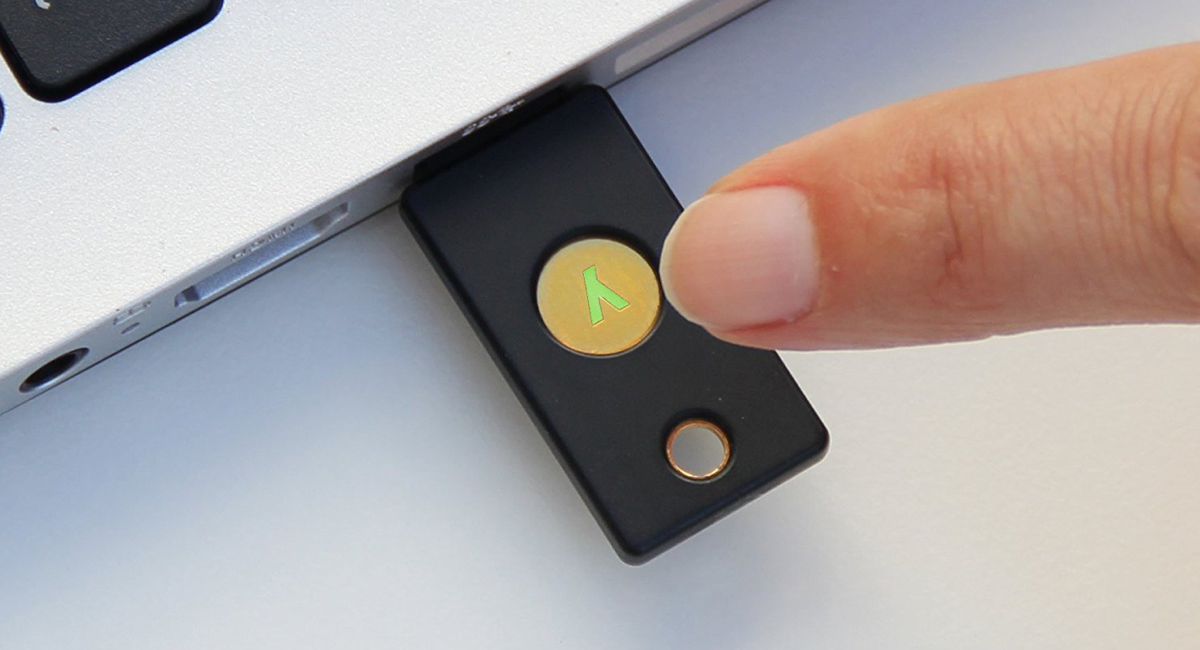
Yubikey
You might be done with beefing up your passwords, but now you need to lock down your accounts to the max. Done right, two-factor authentication is a major barrier for hackers to beat. The strongest protection comes in the form of a Yubikey, a physical, NFC-enabled USB stick that tells Google, Facebook, Twitter and any other supported service that ityou and nobody else. Yuibikeys are the gold standard of two-factor keys.
Price: from $45.00Available from: Yubikey
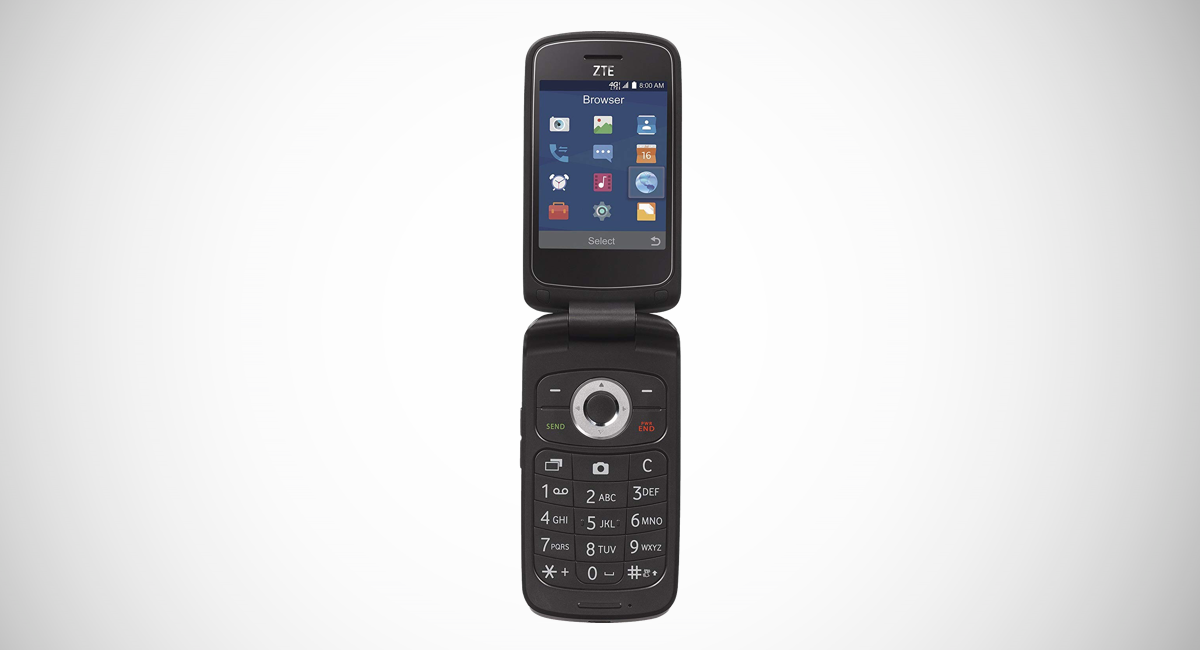
A burner phone
Ever needed to make a one-time phone call to a source, an ally — or even an enemy — without being easily tracked A burner phone is your friend. Though they&re not perfect, burner phones makeit more difficult for the powers that be to track you from place to place, or identify you in a vast sea of metadata and call records. Finding a good burner phone also isn&t easy — it depends on the kinds of threats that you face. A cheap, available phone like the ZTE Z233 is available at many department stores and inner-city pharmacies. You should pay in cash to avoid any financial paper trail. Just, don&t get too attached; the point of a burner phone is that you ditch it after its one and only use. You could always use an app like Burner that generates a temporary phone number, if you don&t want to shell out money.
Price: around $19.99Available from: Target | Sears

Counter-surveillance infrared eyewear
Nothing beats surveillance cameras like invisible infrared light — and clothing and accessory makers know that more than anyone. Pick up a pair of infrared-emitting spectacles that mask your face in CCTV-heavy cities. You can also buy&stealthwear& clothing that can help you blend into a crowd by deflecting heat.
Price: $95.00 — $125.00Available from: Reflectacles

Privacy screens
These thin, sticky screens don&t look like much, but they are vital in preventing visual hacking efforts — thatwhen someone looks over your shoulder and spies on your private information. Privacy screens block anyone looking at your display from outside your 60-degree viewing angle, so anyone next to you will see nothing but a darkened screen.
Price: $18.83 — $42.85Available from: Amazon (phone) | Amazon (laptop)

An encrypted USB storage drive
Encrypted removable storage is hard to come by. Nobody should rely entirely on hardware-based encryption because many drives use proprietary cryptography that are full of bugs. One encryption-supported flash drive stands above the rest — an IronKey D300. The key uses signed firmware to prevent tampering, enforces strong passwords and comes in several storage sizes.
Price: $65.00 — $86.20Available from: Kingston | Amazon

Chromebook
Chromebooks are lightweight and practical, yet range from low-end disposable (almost burner) devices to the high-end and powerful. These Chrome OS-powered behemoths are highly secure — and capable — even if they&re the underdog in the operating system space. With the right tools and guides, Chromebooks can be considerably locked down and a determined defender against even the most powerful adversary. There is an entire spectrum of devices to choose from — including entry-level laptops, mid-range devices and high-end performance giants — a Chromebook for every need, with uncompromising security.
Price: $179 — $499 — $999Available from: Google

A webcam cover
Almost everyone knows that hackers can target your webcam and remotely spy on you. So get a webcam cover! There are so many to choose from, you can be as inventive as you want — from sliding covers and customizable covers — even boutique homemade webcam covers from Etsy. Or, if you&re on a budget, you can never go wrong with a good old fashioned Post-it note.
Price: from $4.99Available from: Amazon | Etsy
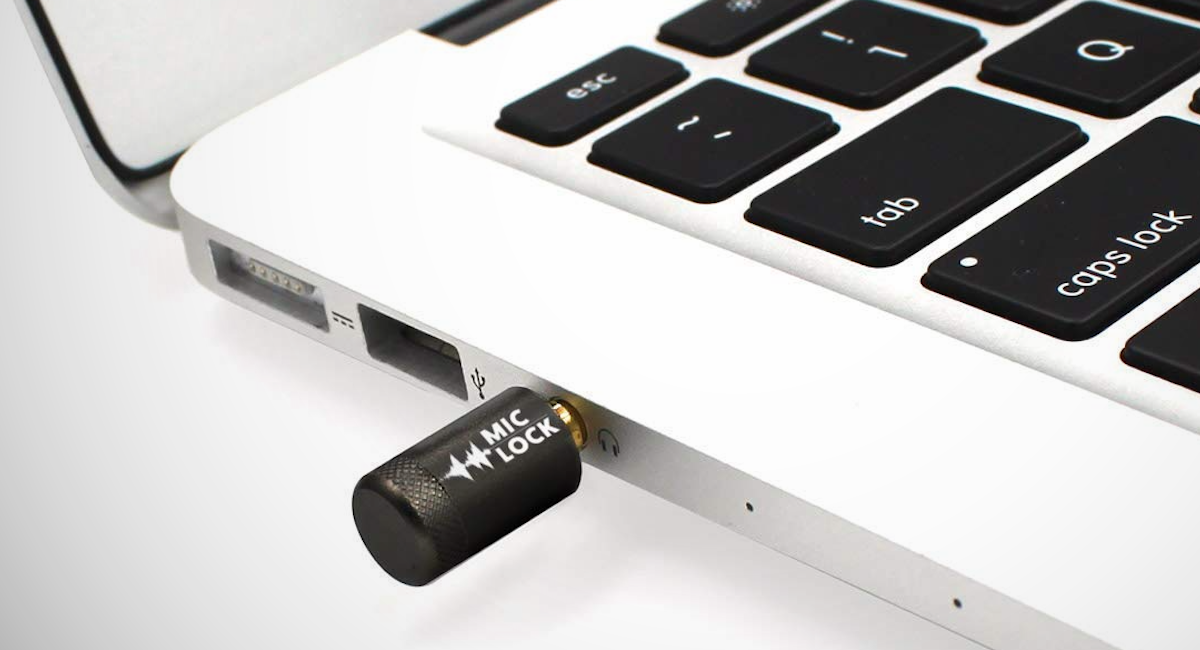
A microphone blocker
Don&t forget about your microphone! Microphone blockers work on most devices with a 3.5mm headphone jack by tricking a laptop or a phone into thinking that an external microphone is installed. Instead, the blocker picks up nothing more than sweet, sweet silence. Most microphone blockers will fit on a keyring and can be taken on the go, but anyone wanting to use a blocker on a newer iPhone or iPad will need a headphone adapter.
Price: $5.99 — $15.99Available from: Amazon | StackSocial

A USB condom
You might think this is a joke, but USB condoms are real! These pocket-sized plugs are great for isolating your devices from alien or untrusted ports, allowing users to power up without transmitting (or receiving) malicious data. Most are USB-A, so any USB-C powered devices — like MacBooks and newer iPads — will also need an adapter.
Price: $11.99Available from: Amazon
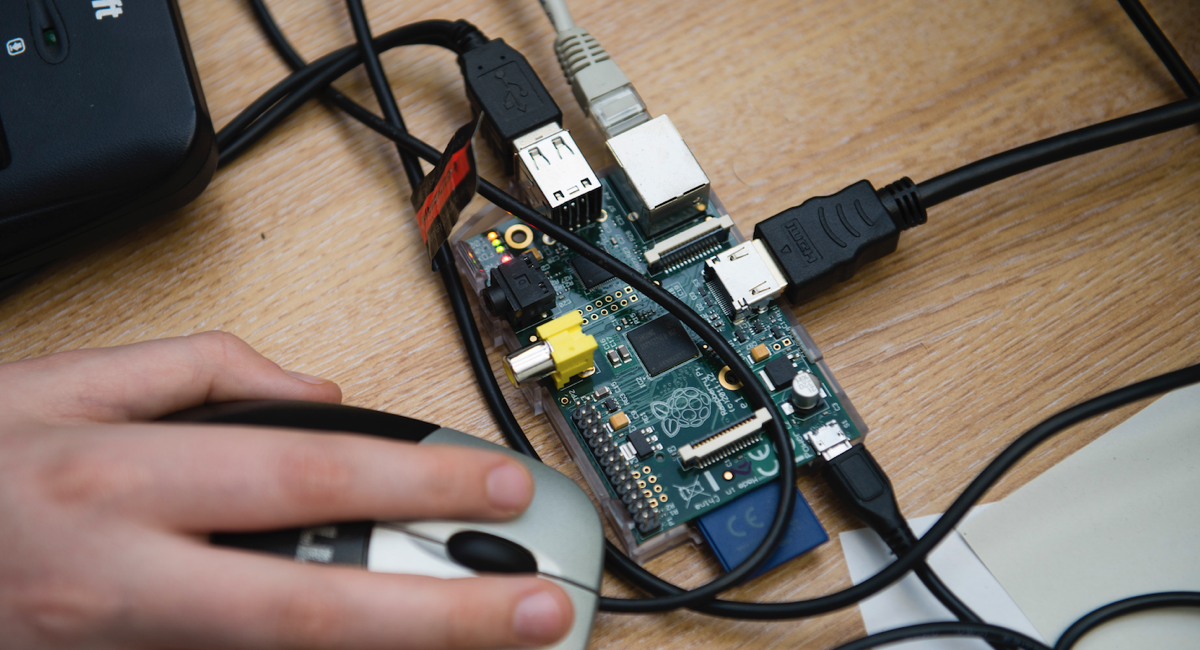
Raspberry Pi mini-computer
These mini-computers might not seem like much, but the Raspberry Pi revolution has taken the developer and hobbyist world by storm. They are ideal for beginners for learning basic coding, they&re highly adaptable and expandable, allowing even the more advanced users to build fully fledged systems — from lightweight gaming machines to media centers, and security systems to virtual private network routers,and more! Nothing speaks to the security-minded geek than an open-source platform to play with.
Price: from $35.00Available from: Raspberry Pi

An RFID blocking wallet
RFID hacking is where someone swipes your personal data or information from an NFC-enabled credit card and makes fraudulent purchases. RFID attacks aren&t a widespread issue but the threat from card skimming exists. The EFF has a decent RFID blocking wallet for a low price, while other, more upscale wallets cost far more.
Price: from $22.00 — 72.00Available from: EFF | Ridge Wallet
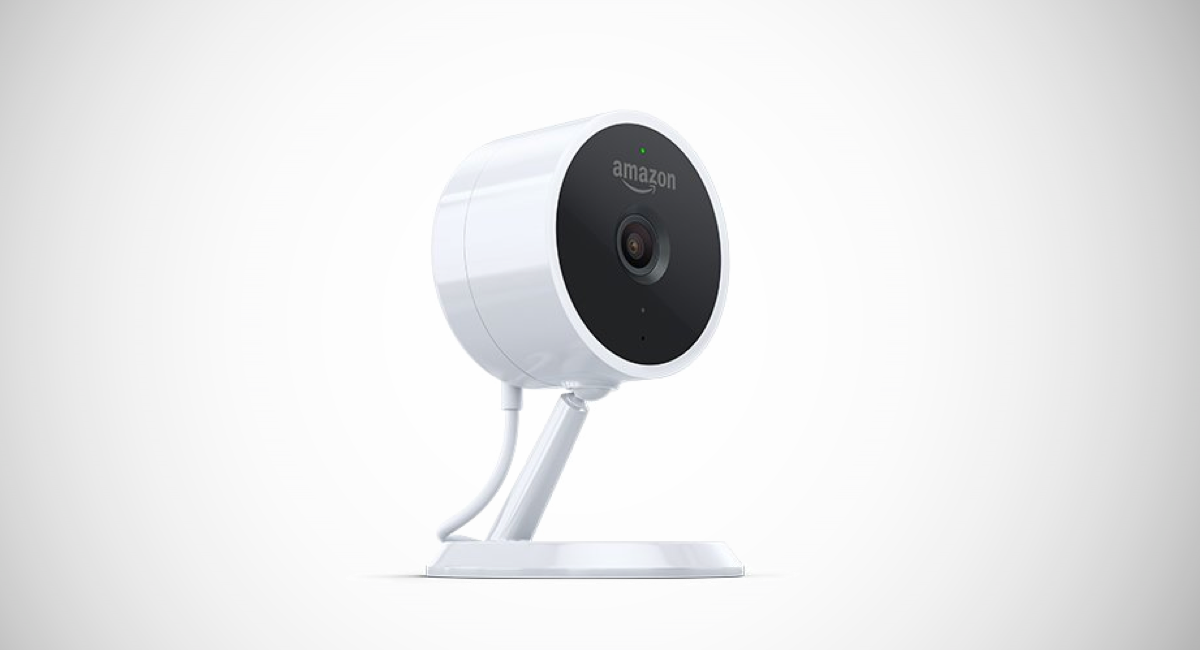
Amazon Cloud Cam
You might think, why would I need a wireless camera if I&m trying to prevent surveillance You&d be surprised at how useful a camera can be. Take AmazonCloud Cam — itthe most secure internet-connected camera available for its price. Think of it as your eyes and ears when you&re away from home — keeping your house and your things safe. Or, even take it with you, and use in your hotel room to prevent &evil maid& attacks. The camera works in the dark, can be easily hooked up to a Wi-Fi network, and its feed is remotely accessible using your Amazon account — which, like other camera makers, can be secured with two-factor authentication. You could even put your Yubikey to good use!
Price: $119.99Available from: Amazon
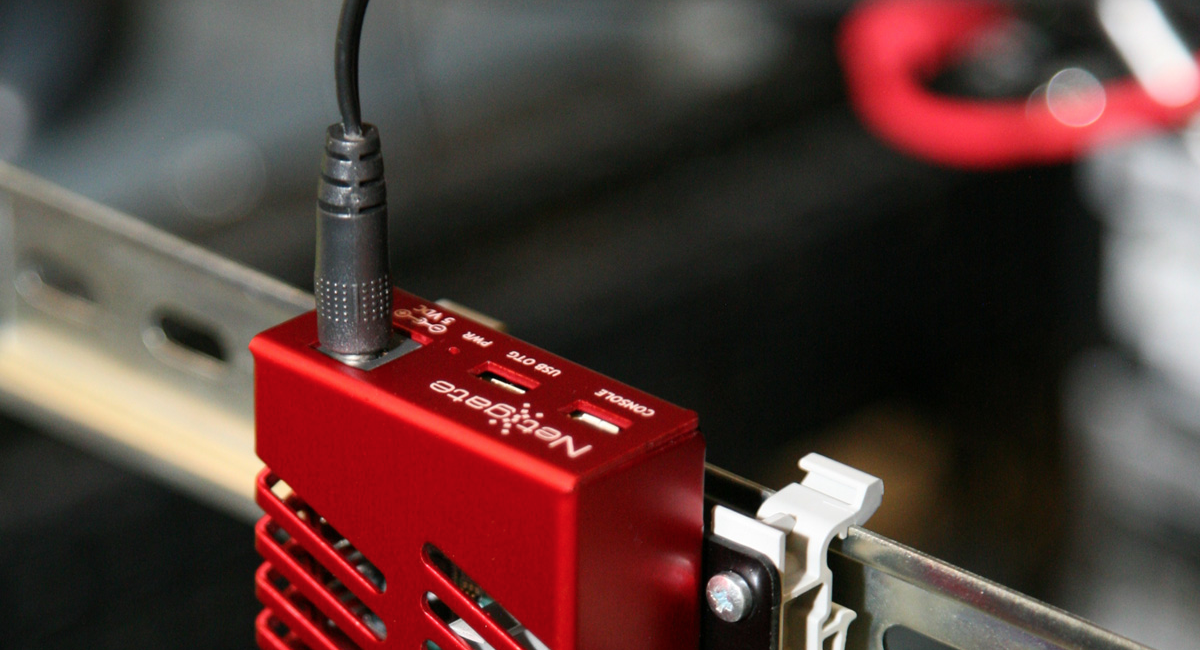
pfSense router
You might not have heard of a pfSense router before, but these security gateways are ideal for protecting your Internet of Things applications. Many IoT devices are insecure or buggy, and can lead to a wider compromise of your home or corporate network. A pfSense router helps segment network traffic to isolate your potentially buggy devices from your production devices. pfSense routers are easy to set up and manage — so you&ll never really have to think about it again.
Price: $249.99Available from: Netgate
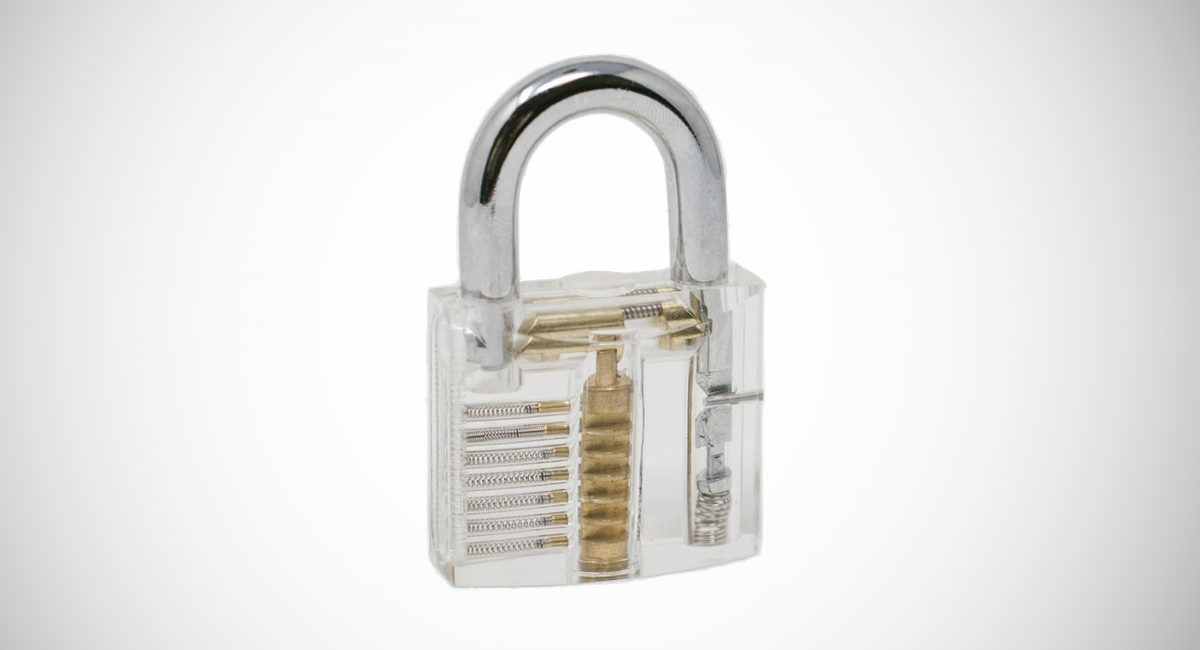
A lock-pick training kit
For the fidgety types: a lock-pick training kit is a great gift for anyone who wants to learn the fundamentals of lock picking. Transparent padlocks work best, as you can easily understand how the innards work — and how to defeat them. There are many available, but you shouldn&t break the bank on a basic kit — especially for beginners.
Price: $30.00 — $59.95Available from: Cool Material | Amazon
- Details
- Category: Technology
Read more: Gift Guide: The best security and privacy tech to keep your friends safe
Write comment (95 Comments)The idea that social media can be harmful to our mental and emotional well-being is not a new one, but little has been done by researchers to directly measure the effect; surveys and correlative studies are at best suggestive. A new experimental study out of Penn State, however, directly links more social media use to worse emotional states, and less use to better.
To be clear on the terminology here, a simple survey might ask people to self-report that using Instagram makes them feel bad. A correlative study would, for example, find that people who report more social media use are more likely to also experience depression. An experimental study compares the results from an experimental group with their behavior systematically modified, and a control group thatallowed to do whatever they want.
This study, led by Melissa Hunt at Penn Statepsychology department, is the latter — which despite intense interest in this field and phenomenon is quite rare. The researchers only identified two other experimental studies, both of which only addressed Facebook use.
One hundred and forty-three students from the school were monitored for three weeks after being assigned to either limit their social media use to about 10 minutes per app (Facebook, Snapchat and Instagram) per day or continue using it as they normally would. They were monitored for a baseline before the experimental period and assessed weekly on a variety of standard tests for depression, social support and so on. Social media usage was monitored via the iOS battery use screen, which shows app use.
The results are clear. As the paper, published in the latest Journal of Social and Clinical Psychology, puts it:
The limited use group showed significant reductions in loneliness and depression over three weeks compared to the control group. Both groups showed significant decreases in anxiety and fear of missing out over baseline, suggesting a benefit of increased self-monitoring.
Our findings strongly suggest that limiting social media use to approximately 30 minutes per day may lead to significant improvement in well-being.
Itnot the final word in this, however. Some scores did not see improvement, such as self-esteem and social support. And later follow-ups to see if feelings reverted or habit changes were less than temporary were limited because most of the subjects couldn&t be compelled to return. (Psychology, often summarized as &the study of undergraduates,& relies on student volunteers who have no reason to take part except for course credit, and once thatgiven, they&re out.)
That said, ita straightforward causal link between limiting social media use and improving some aspects of emotional and social health. The exact nature of the link, however, is something at which Hunt could only speculate:
Some of the existing literature on social media suggests therean enormous amount of social comparison that happens. When you look at other peoplelives, particularly on Instagram, iteasy to conclude that everyone elselife is cooler or better than yours.
When you&re not busy getting sucked into clickbait social media, you&re actually spending more time on things that are more likely to make you feel better about your life.
The researchers acknowledge the limited nature of their study and suggest numerous directions for colleagues in the field to take it from here. A more diverse population, for instance, or including more social media platforms. Longer experimental times and comprehensive follow-ups well after the experiment would help, as well.
The 30-minute limit was chosen as a conveniently measurable one, but the team does not intend to say that it is by any means the &correct& amount. Perhaps half or twice as much time would yield similar or even better results, they suggest: &It may be that there is an optimal level of use (similar to a dose response curve) that could be determined.&
Until then, we can use common sense, Hunt suggested: &In general, I would say, put your phone down and be with the people in your life.&
- Details
- Category: Technology
Read more: Limiting social media use reduced loneliness and depression in new experiment
Write comment (97 Comments)Mary Meeker, who revealed in September plans to leave Kleiner Perkins after an eight-year run with the venture firm, is reportedly looking to raise up to $1.25 billion for her debut fund. So says Business Insider, citing multiple sources.
We&ve reached out to Meeker for more information.
As Meeker told Recode a couple of months ago, she is forming her own late-stage investing firm with three of her KP colleagues, including Mood Rowghani, who joined the firm as a general partner in 2014; Noah Knauf, who joined the firm as a general partner in 2016; and Julietde Baubigny, a senior partner who joined Kleiner Perkins nearly 18 years ago.
Their departures come as Kleiner Perkins was weighing whether or not to raise another growth fund, according to Recodereport. It suggested that over time, a cultural misfit between Kleinerearly and later-stage groups became more pronounced — though the final decision to split off happened abruptly.
In the short term at least, the move seems a blow for Kleiner, which has brought on star investors to help lead its early-stage practice — Mamoon Hamid, formerly of Social Capital, and Ilya Fushman, formerly of Index Ventures — but which suddenly has no women in its senior ranks.
Months before Meeker disclosed that she was leaving with de Baubigny, another longtime general partner, Beth Seidenberg, was learned to be co-founding her own venture outfit. Seidenberg has since closed her debut fund.
More newly, as we reported a couple of weeks ago,Lynne Chou-O&Keefe, who has spent the last five-plus years investing in healthcare on behalf of the firm, is raising her own debut fund. According to an SEC filing, the firm is called Define Ventures, and it has already locked down $50 million in capital commitments from a handful of investors.
Not every venture firm has senior women at the top of the org chart, but for Kleiner, the male-heavy line-up is a bit more glaring, given that it was sued in 2012 forgender discrimination by former partner Ellen Pao.
Pao famously lost her case against the firm in 2015, but the drawn-out episode kept a harsh spotlight on Kleiner Perkins for several years, during which questions about succession and equality were frequently raised by outsiders, and numerous of its partners left. Among these is Aileen Lee, who formed Cowboy Ventures; Matt Murphy, who joined Menlo Ventures; Trae Vassallo, who formed Defy Partners; Chi-Hua Chien, who formed Goodwater Capital; and Ben Kortlang, Brook Porter, Daniel Oros and David Mount, who formed the venture firm G2VP.
Meeker — who before joining Kleiner had risen through the ranks of Morgan Stanley over 19 years, becoming the head of its global technology research practice — supported the firm throughout Paotrial, testifying that she had not experienced discrimination at Kleiner.
At the time, she called the firm the &best place to be a woman in the business.&
Meeker appeared to have an especially close relationship with Kleiner Perkinsmost famous investor, John Doerr, who recruited her personally and who stepped down from his day-to-day management of the firm in 2016.
If Meeker and company succeed in reaching, or surpassing, a target of $1.25 billion for their new effort — and in the current environment, iteasy to imagine they will — their firm will immediately be among the biggest women-led investment firms in terms of assets under management.
The amount wouldn&t be materially different for Meekerteam, however. Kleiner raised its last growth fund in 2016, closing on $1 billion. Meeker, Rowghani, Knauf and Ted Schlein, who has been a managing partner at Kleiner for decades, had been overseeing that vehicle together.
Kleiner had also raised its seventh and most recent early-stage fund in 2016, closing it with $400 million in capital commitments.
- Details
- Category: Technology
Read more: Mary Meeker is said to be raising up to $1.25 billion for her new growth fund
Write comment (94 Comments)Tesla Model 3 owners who opted for the Performance variant now have a reason to go to the track. Or, if history is a guide, they&ll skip the track and try the newly released Track Mode software feature in a parking lot or winding road.
Track Mode — to be clear — is designed for, and should only be used on closed autocross circuits and racetracks. Herewhy.
The software feature taps into the dual electric motors to squeeze even more performance out of the vehicle. But in a new way. Until now, Tesla has used the power produced by its dual motors and torque (the rotational force of an engine or, in this case, motor) to create a super-fast-accelerating vehicle. Now itusing that same motor power and torque to turn the Model 3 into a cornering (and drifting) dynamo.
As Tesla explains in a blog post (and shows in the video below), the company replaced the stability control system with its own in-house Vehicle Dynamics Controller, &software developed specifically for Tesla vehicles that acts both as a stability control system and also as a performance enhancement on the track.&
This Vehicle Dynamics Controller allows for more rotation if needed.If therotation is insufficient, the system commands a rear-biased torque. When rotation is excessive, it commands a front-biased torque. Track Mode also improves cornering by applying brake and motor torque at the same time to produce an increase in tractive force while cornering.
What all this means is that the system is designed to send all the power to the rear wheels while the driver is cornering, which pushes the tail out. If the rotation becomes excessive,the power is sent to the front wheels, pulling the vehicle up and out of the turn.
When enabled, Track Mode also increases regenerative braking. This gives the braking system a break (ahem) and sends more energy back into the battery. It also gives drivers more control with a single pedal (the accelerator). Meaning, the driver can simply lift a foot off the accelerator to get the braking they&re looking for as they approach a corner.
Track Mode also anticipates the strain on the powertrain, so itdrops the temperatures of the battery and the drive units in preparation for the track and continues to cool them down between drive sessions.
Whateven more interesting is how Tesla fine-tuned the feature. Motor TrendRandy Probst ended up working with Tesla engineers during a track session at Willows Springs& Street circuit to get Track Mode performing as it should. The result was a 1:21:49 lap time, beating the recently tested Alfa Romeo GiuliaQuadrifoglio and matching the 2016 Porsche Cayman GT4.
- Details
- Category: Technology
Read more: Why you’re about to see a lot of drifting Tesla Model 3 videos
Write comment (100 Comments)Page 3693 of 5614

 12
12





